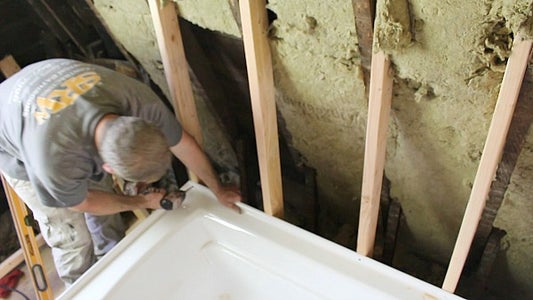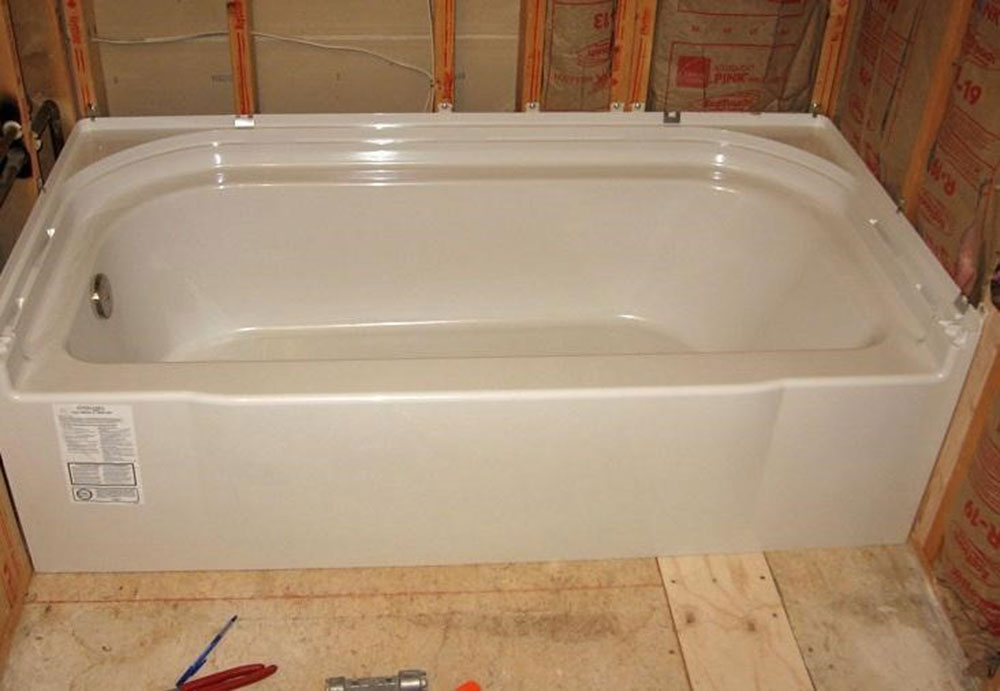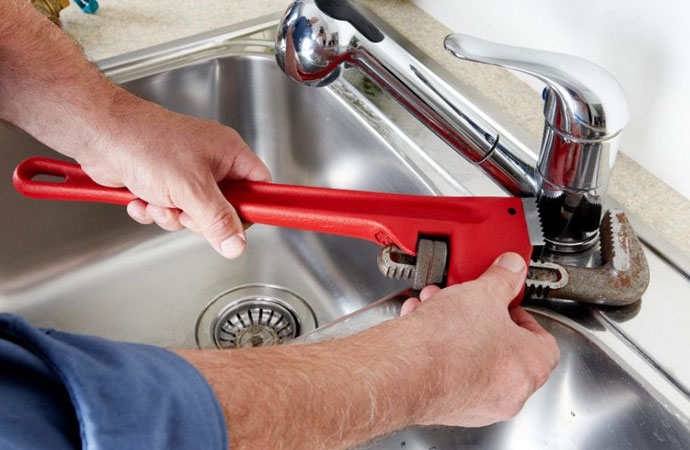Nearly everybody is bound to have their own way of thinking on the subject of A Step-by-Step Guide to Installing a Bathtub.

Setting up a bathtub isn't precisely rocket science, however it does require strong plumbing, carpentry, and occasionally, tiling skills. Replacing an old bath tub with a new one is also a reasonably challenging task. If the old bathtub is readily obtainable, the job can move immediately; if you have to open up a wall to remove the old bathtub and place the new bath tub, the task is a lot harder. In either situation, the project is within a residence handyman's skills, although you will certainly need an assistant to move out the old bathtub as well as embeded in the new one. See to it you have certified yourself for the work as well as fit attempting it. Rather than employing a contractor to take control of a halfway-completed project, it is much better to consider utilizing one prior to you begin. Opportunities are you may require a specialist plumber to make tube connections.
This post will certainly help you set up a new bath tub in your bathroom if you have currently acquired a new tub and also do not require to change the arrangement of your previous water system pipelines.
Your tools as well as product list should comprise the following:
- New Tub
- Hammer
- Pipeline Wrenches
- Prybar
- Shatterproof glass
- Level
- Pliers
- Adjustable Wrench
- Putty Knife
- Screwdriver
- Cold Knife
- Measuring tape
- Pipe Caps
Removing Old Taps
If you need to change old faucets with brand-new ones as a part of your installation, then the first thing you ought to do is detach the water. After doing so, turn on the taps to drain any type of water continuing to be in the system. The procedure of getting rid of the existing taps can be quite troublesome because of the limited accessibility that is usually the case.
Use a basin wrench (crowsfoot spanner) or a tap device to reverse the nut that connects the supply pipes to the taps. Have a towel all set for the remaining water that will come from the pipelines. As soon as the supply pipelines have actually been removed, use the exact same device to loosen up the nut that holds the faucets onto the bath/basin. You will certainly need to stop the single taps from turning throughout this procedure. As soon as the faucets have actually been removed, the holes in the bath/basin will certainly need to be cleansed of any kind of old securing substance.
Prior to carrying on to fit the new taps, compare the pipeline links on the old faucets to the new taps. If the old taps are longer than the new taps, then a shank adapter is needed for the brand-new faucets to fit.
Suitable New Touches
If the tails of the new taps are plastic, then you will require a plastic adapter to stop damages to the string. One end of the port fits on the plastic tail of the tap and the other end gives a link to the current supply pipelines.
If you need to fit a monobloc, then you will call for lowering couplers, which links the 10mm pipe of the monobloc to the common 15mm supply pipeline.
Next off, position the tap in the mounting opening in the bath/basin making sure that the washing machines are in place in between the faucet as well as the sink. Secure the tap in position with the maker offered backnut. Once the faucet is firmly in place, the supply pipes can be attached to the tails of the faucets. The taps can either be connected by utilizing corrugated copper piping or with typical tap adapters. The previous type should be attached to the tap ends initially, tightening only by hand. The supply pipelines can later on be linked to the other end. Tighten up both ends with a spanner after both ends have actually been connected.
Mounting the Tub
Utilizing both wood boards under its feet, place the bath tub in the needed position. The wood boards are valuable in evenly spreading out the weight of the tub over the area of the boards as opposed to focusing all the weight onto 4 little points.
The following goal is to make certain that the tub is leveled all round. This can be achieved by examining the spirit level and also changing the feet on the bath tub up until the spirit level checks out level.
To mount taps, fit all-time low of the furthest adaptable tap adapter to the suitable supply pipeline by making a compression join; after that do the exact same for the various other tap.
Activate the supply of water and also inspect all joints and also new pipework for leakages and tighten them if essential. Fill the bath tub and additionally check the overflow electrical outlet and the typical electrical outlet for leaks.
Ultimately, repair the bathroom paneling as described in the producer's user's manual. Tiling and securing around the bathtub must wait till the bathtub has actually been used a minimum of when as this will resolve it right into its final setting.
Planning for the Setup
To start with, the supporting framework provided with the bath ought to be fitted (if called for) according to the manufacturer's directions. Next off, fit the taps or mixer to the bath tub. When fitting the tap block, it is very important to see to it that if the faucet comes with a plastic washing machine, it is fitted in between the bath and also the taps. On a plastic bath, it is additionally sensible to fit a supporting plate under the faucets unit to avoid pressure on the bathtub.
Fit the versatile faucet connectors to the bottom of the two faucets using 2 nuts as well as olives (occasionally supplied with the tub). Fit the plug-hole electrical outlet by smearing mastic filler round the sink electrical outlet hole, and after that pass the electrical outlet through the hole in the bath. Utilize the nut provided by the manufacturer to fit the plug-hole. Take a look at the plug-hole electrical outlet for an inlet on the side for the overflow pipe.
Next, fit the end of the adaptable overflow pipeline to the overflow outlet. After that, screw the pipeline to the overflow face which need to be fitted inside the bath. Ensure you utilize every one of the provided washers.
Connect the trap to the bottom of the waste electrical outlet on the bath tub by winding the thread of the waste outlet with silicone mastic or PTFE tape, as well as screw on the catch to the electrical outlet. Attach the bottom of the overflow tube in a similar manner.The bath ought to currently be ready to be fitted in its last placement.
Tiling Around the Bath tub
In the location where the bath meets the tile, it is required to secure the joins with a silicone rubber caulking. This is essential as the fitting can relocate sufficient to split an inflexible seal, creating the water to penetrate the wall between the bath and the tiling, resulting in problems with moisture as well as feasible leakages to the ceiling listed below.
You can pick from a selection of coloured sealers to blend in your fixtures and fittings. They are sold in tubes and cartridges, and also can securing spaces as much as a width of 3mm (1/8 inch). If you have a larger void to load, you can load it with twists of soaked paper or soft rope. Keep in mind to constantly fill up the tub with water before sealing, to allow for the movement experienced when the tub is in usage. The sealer can fracture rather very early if you do not take into consideration this motion before sealing.
Alternatively, ceramic coving or quadrant floor tiles can be made use of to border the bathroom or shower tray. Plastic strips of coving, which are easy to use as well as cut to size, are also conveniently readily available on the marketplace. It is recommended to fit the ceramic tiles using waterproof or water-proof glue as well as grout.
A Step-by-Step Guide to Installing a Bathtub
Is your bathtub looking a bit dated lately? Believe it or not, installing a new one is a project you can do yourself. Whether your bathtub is broken or doesn’t fit in with your current bathroom’s design, you can fix it without having to hire a contractor or paying labour costs.
But, beyond saving money, there are other benefits of installing your own bathtub. When you do this project yourself, you can customise every step of the process. You can also make sure the finished product looks exactly the way you want it to.
This DIY project is quite involved, but by doing some research, preparing your bathroom and using the right equipment, it is definitely one you can take on. This guide will help you understand the technical procedures behind installing a new bathtub.
Remove the Existing Bathtub
To remove the old bathtub, you will need to turn the water supply off before you start any work. After you turn the water off, there will likely still be some water left in your plumbing system, which you can remove by turning on a faucet below the level of the bathtub. Once the water stops running, you are ready to start working.
The easiest way to remove the tub is to remove the faucet, handles and other piping and then pull the tub out from the wall. If this doesn’t work in your situation, you will need to remove part of the wall, remove the piping and then slide the tub out.
Choose the Right Bathtub
The ideal way to replace your bathtub is to find one that has the exact dimensions and has the drain and faucet on the same side as your old one. This way, it will fit in the same place and you won’t have to change the piping system in your bathroom. Choose a tub that matches your home’s decor and fits with the style of the bathroom.
Install the Plumbing and Ledger Board
You can purchase a tub drain kit at a hardware store which will have all the pieces you will need for your new tub’s plumbing. Follow the instructions that came with the kit to install the plumbing in the new tub and then take measurements to make sure the plumbing in the tub will align with the plumbing in your bathroom. If it doesn’t, now is the time to make necessary adjustments.
Some bathtubs need a ledger board that is installed on the wall behind the tub to help support it. If your new bathtub requires one, the directions that came with it will tell you how high it should be installed. If your old bathtub had a ledger board, and it is still in good condition, you can adjust its height to match the new bathtub.
Install the Bathtub
When the plumbing and ledger board are ready, you can install the new bathtub. Carefully lower it into the space, being careful not to damage the tub, wall, plumbing or ledger board. Since bathtubs are very heavy and you will need to line the tub up exactly, it is wise to have someone help you with this step.
Once the tub is in place, it needs to be perfectly level, so use a bubble level instead of estimating how level the tub is. Put the level on the top edge of the tub, not the bottom on the inside, since many tubs are designed with a sloped bottom.
If the bathtub isn’t level, adjust the ledger board and shift the tub until it is. When it is level, use screws to attach the tub to the wall studs. Most bathtubs have pre-drilled holes in the upper flange, so use these but do not over tighten the screws.
Hook up the Plumbing
Now that the bathtub is installed, it needs to be attached to your plumbing system. First, install the shoe fitting under the tub and drain pipe, then the overflow pipe and then the drain flange. Your tub plumbing kit will include specific instructions on how to install these pieces.
Install the Bathtub Surround
A bathtub surround will protect the walls around the tub from water damage and can give your new bathtub a more finished look. To install one, make sure the wall is completely clean and dry so that the adhesive will be able to hold the surround securely. Then, measure the surround and mark the same dimensions on the wall above the tub.
Following the directions that came with the surround adhesive, apply it to the wall. Press the surround against the wall on top of the adhesive and then pull it away for about three minutes to activate the adhesive, then apply the surround again. Keep in mind that this is the most common way to use an adhesive, but you should check the instructions on the package for any special steps.
If there is any excessive adhesive around the sides of the surround, you can use mineral spirits to remove it. Then use masking tape to hold the surround panels in place until the adhesive is dry. Using silicone, seal all the cracks between the surround panels and the gap between the bottom of the panels and the top of the bathtub.
If you want to install tile above your bathtub, instead of a bathtub surround, the process will be very similar. But, you will need to measure and cut tiles and install each one individually, using tile spacers to make sure they are evenly spaced. You will then use grout to fill in the spaces between the tiles.
https://www.hss.com/blog/bathroom/a-step-by-step-guide-to-installing-a-bathtub/

As an avid reader on Installing A Bathtub, I was thinking sharing that piece of content was a great idea. Remember to take the time to share this write-up if you enjoyed it. We treasure reading our article about Installing A Bathtub.
Schedule Now!

